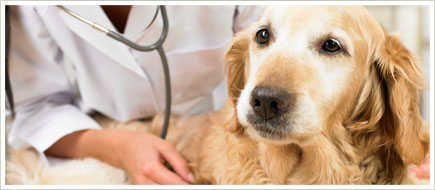Category: Senior Dog Care
-
Monitoring Your Senior Dog for Signs of Disease
•
As your dog ages, the likelihood he will develop various changes in the function of his body system increases. Some of these will be normal changes to the aging process, others may be indicative of disease. To be more easily alerted to possible signs of disease early in the disease…
-
Cheers and Boos: Good, bad and ugly of 2016
•
The New Year is just around the corner. It is a good time to reflect on the good, bad and ugly. Cheers to our ever-loyal furry senior companions. The warmth of your pet on your lap, and the sheer joy your dog shows when you walk through the door are…
-
How Seniors Dogs Behave as they age!
•
When dogs reach senior status, expect physical and behavioral changes. Listed are some senior issues: Changes in elimination patterns Decrease in interactions with other pets Onset of aggression in a normally nonaggressive pet Disorientation and/or poor problem-solving Changes in sleep patterns Changes in vocalization ( chico is having more conversation…
-
Senior Pet Care
•
Due to improved veterinary care and dietary habits, pets are living longer now than they ever have before. One consequence of this is that pets along with their owners and veterinarians, are faced with a whole new set of age-related conditions. In recent years there has been extensive research on…
-
Excercising the Mind of Your Senior Dog
•
One of the most important contributions you can make to your aging dog’s quality of life is helping to keep his mind active. The canine mind, as well , as the human mind not challenged on a regular basis becomes stagnant , bored and less engaged in the world. Include…
-
Staying on the Move
•
If you are trying to keep your senior dog reasonably limber, the most important thing that you can do is keep him moving. Experts urge men as well as women , in orfer to forestall osteoporosis, to keep moving. This use it or loose it principal applies to dogs too.…
-

Separation Anxiety in Older Dogs
•
Older dogs , in many cases misbehave, not because they don’t know the rules, but , for many reasons, are unable to follow them. Separation anxiety is one of the most common behaviour problems seen in older dogs. Your little guy will become anxious when he senses you are about…
-

Senior Care Kennels
•
I hate to spend even one night away from Chico and Bella because they are such a big part of my daily life. But sometimes for any number of reasons , you simply must put your senior dog in a kennel for one night or more. Before making a choice…
-

Why Does My Senior Dog Eat Grass?
•
Biologist have told us that canids-dogs, wild dogs, wolves , etc, All, eat grass, as a normal part of its diet. So its important to recognize that attempting to prevent your little guy from eating grass is not necessary, unless your lawn has been treated with insecticides, or some kind…
-
Excercise and Older Pets
•
All of a sudden one day you notice the shining white (grey)creeping into your dogs muzzle . He sleeps a little more carefully now but most time seems to be just as energetic. What is wrong-nothing. He is just aging. Happens to us all. If you have not already, now is…
-

What Causes Pet Cancer?
•
Enviormental and Food Toxins Do a screening of your household. Exposure to chemicals in the enviorment and even small doses of chemical additives and preservatives can build up and be carcinogenic. Look around your house and get rid of any toxins. You can read labels and it will tell you…
